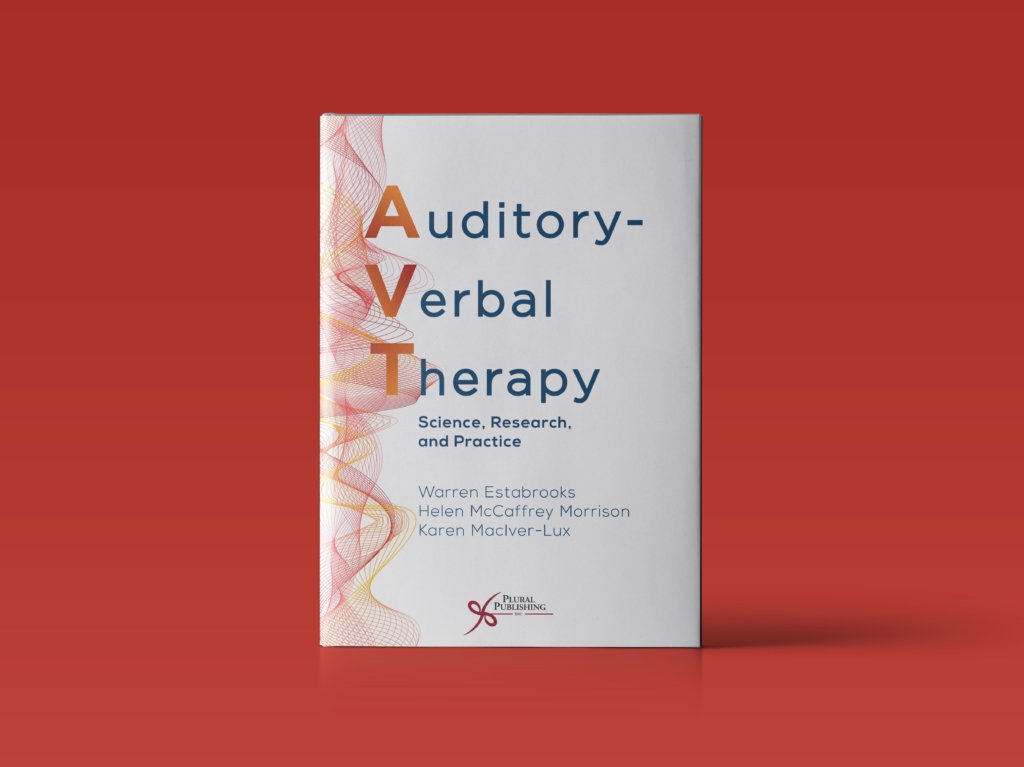Book Review

Auditory-Verbal Therapy: Science, Research, and Practice | Editors: Warren Estabrooks, Helen McCaffrey Morrison, and Karen MacIver-Lux | Published: 4/29/2020 | ISBN: 978-1-63550-174-2 | https://www.pluralpublishing.com/publications/auditory-verbal-therapy-science-research-and-practice
Warren Estabrooks, Helen McCaffrey-Morrison, and Karen MacIver-Lux have brought us a new tome of auditory-verbal knowledge. The book is just under 1,000 pages and includes contributions from over 40 authors across Canada, the US, the UK, and Australia. It is dedicated to the late Dr. Alice Eriks-Brophy, professor emeritus at the University of Toronto, for her commitment to evidence-informed practice in auditory-verbal therapy.
The book presents auditory-verbal therapy's foundations by linking auditory development to intervention and providing an updated literature review. It continues by detailing the role of hearing technology and speech acoustics in auditory-verbal therapy. Uniquely, language is not explicitly investigated as a developmental domain. Rather, chapters explore language learning through audition, speech, play, cognition, literacy, and discourse to highlight an auditory-verbal approach's holistic nature. The book discusses treatment planning, caregiver-coaching, clinician self-appraisal, and child speech, language, and audiology assessment. These chapters also include useful examples to illustrate implementation.
The book's final section seeks to expand the population that has historically received and benefitted from auditory-verbal therapy. Chapters describe approaches to auditory-verbal therapy when working with children who have unique hearing issues, such as ANSD, single-sided deafness, or soft cochlear implant failures, and those with additional needs, who traditionally were excluded from auditory-verbal programs. The section also describes appropriate measures to be taken with multilingual families.
Of particular note is a chapter on families experiencing adversity by Drs. Jenna Voss and Susan Lenihan. They clearly lay out how poverty, child maltreatment, caregiver mental health, family instability, violence, and substance abuse can influence auditory-verbal outcomes and how practitioners can identify personal biases and reflect in productive ways that can positively impact family resilience. It is a discussion that is well overdue in the auditory-verbal literature. Also of note is a timely chapter on implementing auditory-verbal therapy via telepractice, from which many clinicians working in the time of COVID-19 could benefit.
The book closes with dual chapters focused on the profession of auditory-verbal therapy itself. The first discusses the professional training process for auditory-verbal therapists, a worthwhile read for prospective mentors and mentees. A cost-benefit analysis is also presented that may help families and clinicians justify the cost of services to larger institutions and government agencies.
Together, the massive work effectively summarizes auditory-verbal practice, highlights specific challenges to service providers that have hindered access to care for many in the past, and presents valuable solutions and examples. Any clinician or caregiver interested in the latest clinical and academic trends in auditory-verbal therapy should consult this resource.
Disclosure
*Dr. Ganek wishes to disclose that she co-authored ‘Chapter 3: Evaluating the research examining outcomes of auditory-verbal therapy: Moving from evidence-based to evidence-informed practice’ in Auditory-Verbal Therapy: Science, Research, and Practice (2020).

